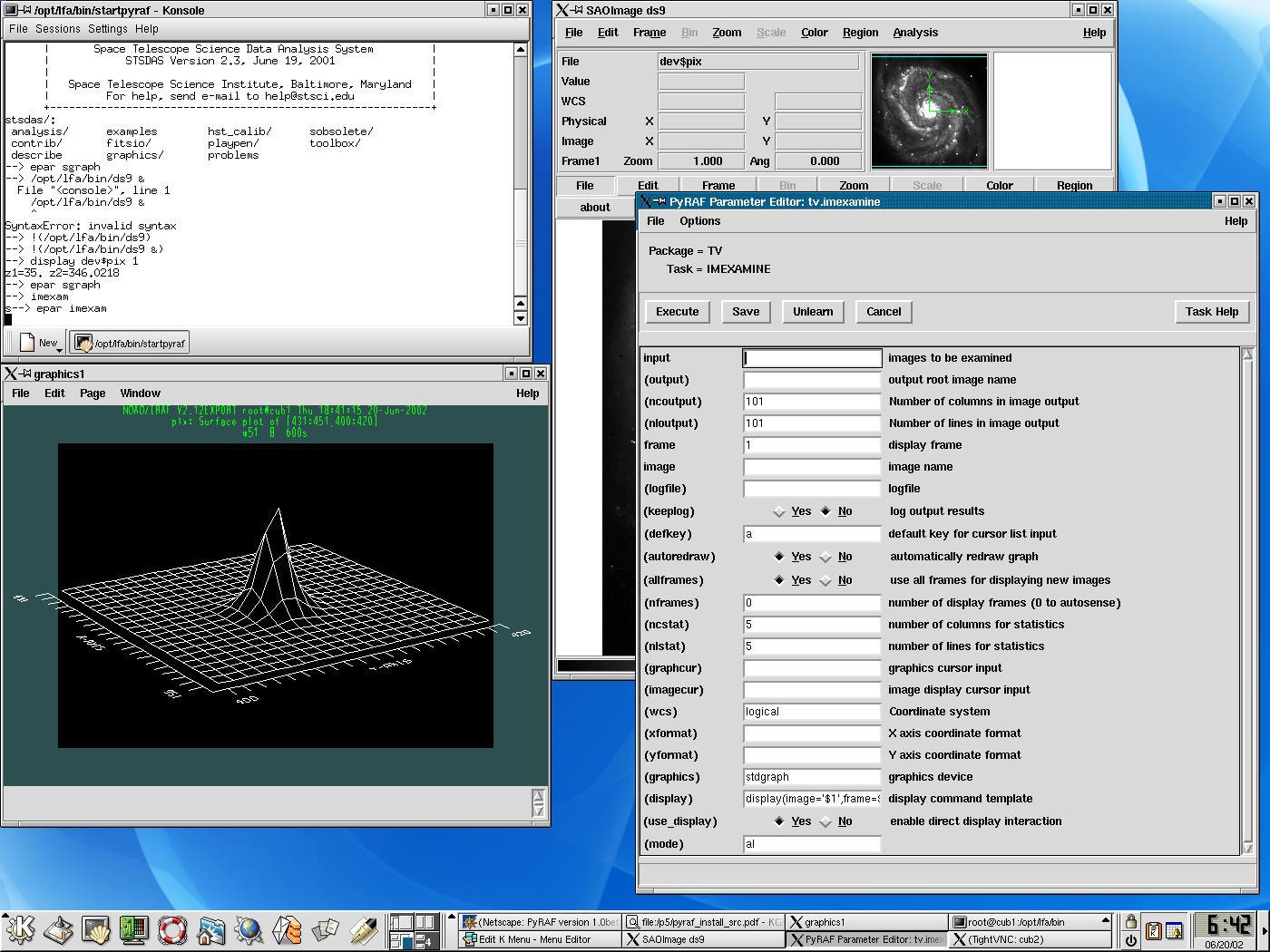
PyRAF is a command language for IRAF
Version : 1.1.2
Author(s) : Space Telescope Science Institute (help@stsci.edu)
License : pyraf
Website : http://www.stsci.edu/resources/software_hardware/pyraf/what_is_pyraf
Installs from Open Source Astronomy for Linux cd 2
Disk space required for installation is 56.93 Mb
This package requires prior installation of iraf
After the package is installed it can be accessed using the command
/opt/astro/bin/startpyraf

PyRAF is a command language for IRAF based on the Python scripting language that can be used in place of the existing IRAF CL. Why a new IRAF CL?
The current IRAF CL has some shortcomings as a scripting language that make it difficult to use in writing scripts, particularly complex scripts. The major problem is that the IRAF CL has no error or exception handling. If an error occurs, the script halts immediately with an error message that has little or no information about where the error occurred. This makes it difficult to debug scripts, impossible to program around errors that can be anticipated, and difficult to provide useful error messages to the user.
But there are other important reasons for wanting to replace the CL. We want to develop a command language that is a stronger environment for general programming and that provides more tools than the existing IRAF CL. Python (www.python.org), like Perl and Tcl, is a free, popular scripting language that is useful for a very wide range of applications (e.g., writing CGI scripts, text processing, file manipulation, graphical programming, etc.). Python is also an open system that can be easily extended by writing new modules in Python, C, or Fortran. By developing a Python interface to IRAF tasks, we open up the IRAF system and make it possible to write scripts that combine IRAF tasks with the numerous other capabilities of Python.
Ultimately, we plan for PyRAF to have command-line data access and manipulation facilities comparable to those of IDL (the Interactive Data Language, www.rsinc.com, which has extensive array-processing and image manipulation capabilities). It should eventually be possible to write applications in PyRAF that can manipulate the data directly in memory and display it much as IDL does. We are hoping that Python and PyRAF will become the programming language of first resort, so that programmers and astronomers will only infrequently need to write programs in C or Fortran. Moreover, when it is necessary to use compiled languages, programs written in C, C++, and Fortran can be easily linked with and integrated into PyRAF.